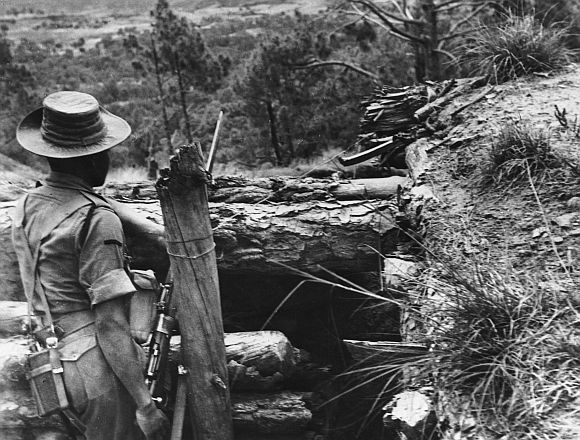 | « Back to article | Print this article |
The government was also faced with problems on its balance of payments. It took steps to conserve declining foreign exchange reserves, and began to regulate the production, supply and distribution of gold. It banned forward trading in the yellow metal in November 1962, and introduced gold bonds as well, reveals the RBI’s annual report for the year ending June 1963.

To gauge the possible cost of an escalation between India and China, one need look no further than the Reserve Bank of India’s recent archival disclosures of annual reports, which has some revealing data on the impact of the 1962 war between the nations.
The stock markets fell 16 per cent, financial institutions lent more to meet capital requirements, and gold prices plummeted 30 per cent in three weeks after the government introduced controls to conserve forex reserves. A possible balance of payments issue was also averted.
The RBI’s annual report for the year ending June 1963 said that stock markets had seen a boom beginning in 1958, but faltered in 1962. The index that measured stock performance then, 17 years before the S&P BSE Sensex, fell 8.2 per cent between July and December 1962. It fell 16 per cent for the year ending June 1963.
“The decline was mainly attributable to the situation created by the Chinese invasion, apprehensions concerning the Budget and disappointment over the smaller increase in steel retention prices than recommended by the Tariff Commission,” it said.
Companies raised more capital from the stock market than before. Investors seemed more choosy about the firms they gave capital to.
The last quarter of the year saw a number of issues fail to reach the necessary subscription numbers. Many other firms didn’t even bother to use the permission that they had received to raise money. Meanwhile, the government looked to curb speculation and regulated the working of stock exchanges.
“The uniform margin system introduced in December 1961 was found inadequate and was buttressed by other measures to curb speculative trading and, at the height of the crisis, by the temporary closure of business on the leading stock exchanges. Government ordered the suspension of forward trading on stock exchanges effective November 29, 1962,” it said.
The restrictions were gradually lifted after selling pressure eased. Forward trading began again in June 1963.
Loans might have been made more easily available as equity capital became more difficult to tap. Disbursements as a percentage of sanctioned loans rose to 67 per cent in 1962-63, noted the RBI report. It was 47 per cent the previous year.
Among those who were underwriting new issues was The Industrial Finance Corporation of India (now known as IFCI) and the Industrial Credit and Investment Corporation of India (which later went on to become what is today ICICI Bank).
The government was also faced with problems on its balance of payments. It took steps to conserve declining foreign exchange reserves, and began to regulate the production, supply and distribution of gold. It banned forward trading in the yellow metal in November 1962, and introduced gold bonds as well.
Gold prices remained volatile as various steps were rolled out. The price for 10 grammes of gold touched a high of Rs 121.65 in November 1962. It then fell to Rs 86 on November 24, 1962. It was at Rs 112 by June 1963.
Referring to this period former Reserve Bank of India (RBI) governor YV Reddy spoke of how even households were urged to surrender their holdings in those days, during a speech at the Gold Economic Conference organised by the World Gold Council in New Delhi on November 28, 1996.
“The issue of gold bonds was accompanied by exhortations to the public to refrain from buying gold and to surrender their holdings to the government. The RBI advised commercial banks to consider recalling loans made against the security of gold,” he had said.
The balance of payments actually improved for the 12 months ending June 1963. Key factors that helped in this were a quicker flow of aid, and a rise in exports after the inclusion of Goa, which joined the Union in December 1961.